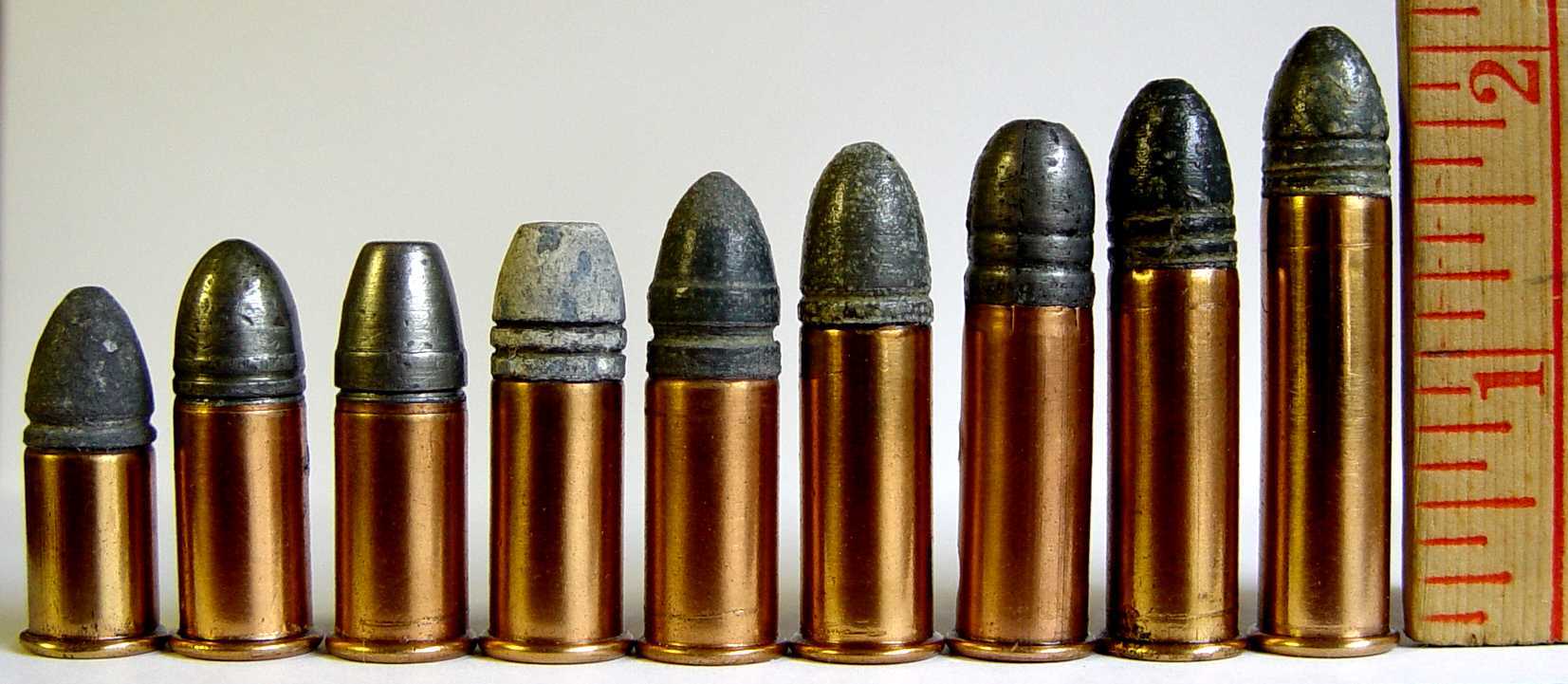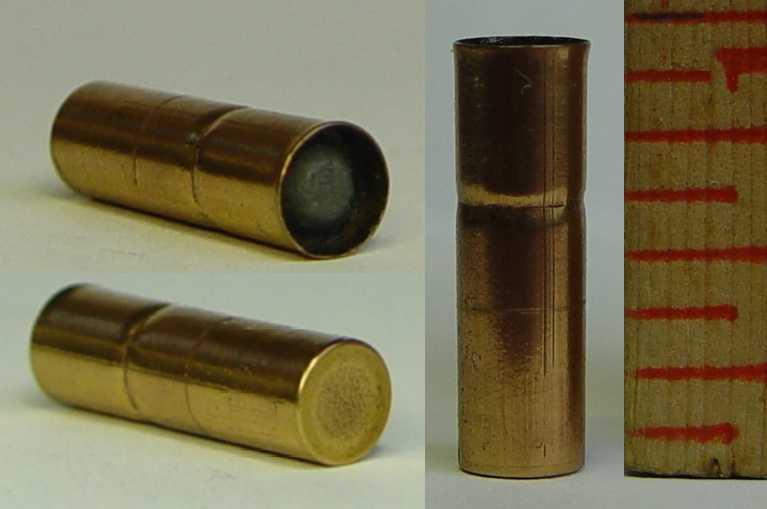|
THE CARTRIDGE COLLECTOR'S EXCHANGE |
| Contents
Cartridge
Lists Links to Other Sites
Cartridge Collectors Organizations:
Auctions:
Books:
Other Collector's Sites: |
Home of the Old Ammo Guy's Virtual Cartridge
Trading Table
Featuring a wide range of antique, obsolete,
and modern ammunition for collectors
July 2004
The Flobert cartridge was developed in 1845, its design being based essentially on a round lead ball inserted into a percussion cap. The cases of the earliest examples were tapered at the head to hold them in place for firing. The Flobert cartridge provided the inspiration for Daniel Wesson when he developed his No. 1 pistol cartridge in 1858, referred to eventually by its more recognizable name, the .22 short rimfire.Wesson added the distinct rim which became the accepted norm for all metallic cartridges that followed. The raised headstamps shown in the two pictures that follow are from 9mm Flobert cartridges in my collection.
This first picture begins on the left with an unheadstamped shot cartridge, having a rolled paper 'hull' folded over at the mouth rather than the usual rolled crimp and paper wad as are usually found on the old paper shotgun shells. The tapered rim is quite apparent on this cartridge and the cartridge on the far right. It is followed by cartridges headstamped with a standing bird (made for Carlos Rosetti, Argentina), a thistle? branch with leaf and flower (perhaps Scottish?), G (canted to the left due to my carelessness, probably made by Gaupillat & Gevelot), G encircled by FQUE GEVELOT (again by Gevelot), GE (origin unknown), GD (very large and lightly stamped, origin unknown), H topped with a crown (J.P. Hoesterey, Germany), SP (Scorzato Hermanos & Cia, Argentina), followed by an early unheadstamped ball load.
The second picture, from the left, shows a side view of the shot load with the canted G in the upper picture, which has FLOBERT BTE imprinted on the side of the paper hull. I believe the 'BTE' stands for Brevette, French for 'patent'. The headstamps in the picture include a flying bird (lightly stamped without the usual circular depression, by Braun & Bloem, Germany), the same flying bird stamped heavier and with the depression, a lion (lying down, origin unknown), an oak branch (with three leaves and two acorns, by Gustav Genschow & Co, Germany), E (by Eley), GHD (made by COA for Giacomo Hijo, Argentina), COA (by Cartucheria Orbea Argentina), SAS (by Spreafico, Argentina), followed by a two piece copper and brass cased 9mm Bosquette by Gaupillat & Gevelot. I'd appreciate hearing from anyone with identities for the unknown examples in the two pictures, or corrections if any of the identifications I have provided are in error.
Nine .44 Rimfires, Including 1 Unidentified......
Here's a grouping of .44 rimfire cartridges; from the left, they include the following: .44 short, unheadstamped but believed to have been made by Eley; .44 Henry pointed with raised US headstamp; .44 Henry flat short case with raised US headstamp, with the so-called 'Robinson' style target bullet ,and also an odd 'stepped' mouth crimp; .44 Henry flat long case with raised E headstamp, indicating manufacture by Eley of London; .44 Long, unheadstamped but with bullet and head tool marks identifying it as an Ethan Allen product; .44 Howard with impressed U headstamp; .44 Ballard, unheadstamped with six long segments in the mouth crimp, possibly made by Fitch Van Vechten & Co; unidentified .44 without a headstamp, with tapered leading edges to the bullet grooves and four segments in the mouth crimp, possibly made by Crittenden & Tibbals; and .44 Extra Long with no headstamp and probably made by WRA Co. Measurements of the unidentified cartridge are: bullet- 0.433", neck- 0.438", base- 0.440", rim- 0.507", case length- 1.265", length overall- 1.888" Any help in identifying this mystery cartridge would be appreciated.
A seldom encountered cartridge....... Here's a cartridge that's not seen too often. Looking like a .28 cupfire without the cup, this is the cartridge for the front-loading .28 Woods revolver. Patented in England on February 4th, 1865, Stephen W. Wood's revolver design was one of many intended to circumvent Rollin White's 1855 patent on the bored through cylinder. The rights to White's patent were secured in 1856 by Smith & Wesson, giving them a virtual monopoly in this country on the production of breech-loading revolvers until 1869. Wood's revolver and cartridge saw only limited production, and are thought to have been the basis for the front-loading pocket revolvers produced by the Connecticut Arms Company of Norwich, Connecticut, which used the more common cup-primed cartridges. The Woods cartridge was constructed with an metal liner inside. The fulminate priming was placed between this liner and the inner wall of the cartridge case; the pistol hammer struck the cartridge on its side to detonate the priming. On the cup-primed cartridges, the priming was between the walls of the case where the fold was made at the base to form the cup. On these cartridges, the hammer struck the inside surface of this fold to fire the cartridge.
|




